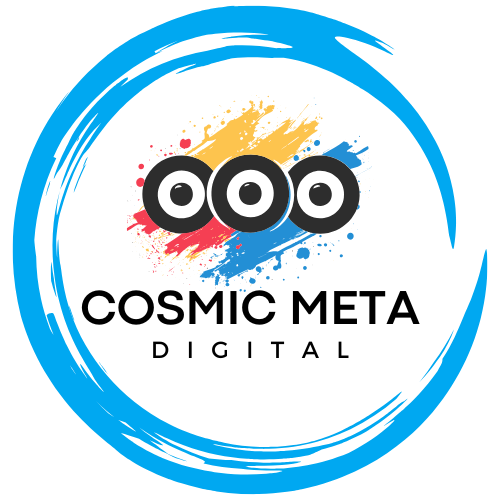Stack Overflow is rethinking real‑time conversation for developers. Most importantly, it aims to blend trusted Q&A with collaborative chat and AI‑assisted workflows—while keeping community quality at the center. This evolution prioritizes speed, context, and credibility all in one integrated platform.
In recent times, developers have expressed the need for a dynamic collaboration space that not only facilitates fast interactions but also preserves the integrity of shared knowledge. Because of this, the platform is undergoing significant changes to merge the best attributes of live conversation and structured Q&A.
Why Renew Chat Now?
Developers increasingly work in real time, because modern collaboration now happens in chat, terminals, and pull requests. Most importantly, they desire a platform where the rapid nature of a live discussion transforms into a durable and high-quality Q&A repository. Therefore, Stack Overflow’s renewed chat is designed to offer the best of both worlds by blending conversational flow with the accountability of curated knowledge.
This update is also a response to recent community feedback and trends. For instance, discussions on platforms like Hacker News have highlighted both the need for rapid communication and the potential pitfalls of fragmented information. Furthermore, the updated chat strategy addresses concerns about losing valuable information in transient chat logs by ensuring that every conversation can be transformed into an accessible Q&A post.
Besides that, amid organizational changes such as the recent headcount reduction announced by Stack Overflow, the platform is refocusing its energy on features that add clear value for developers. By integrating robust collaboration tools with AI-enhancements, the renewal aims to propel the community into a more efficient and forward-looking era.
Goals for the Renewed Chat
The renewed chat experience is built around several key objectives. Most importantly, it seeks to provide real collaboration through topic‑focused rooms that foster active help, review, and pair-like troubleshooting. Because these initiatives are designed to blend speed with methodical knowledge building, every valuable snippet has the potential to graduate into a canonical Q&A.
Additionally, answer durability is a key focus. This initiative is prompted by the understanding that once great answers are validated, they should be preserved in a structured and searchable format. The integration of AI‑assisted flow further enhances this by providing features such as summarization, code block extraction, and suggestion of duplicates, ensuring that human oversight is always maintained. For more insights into AI’s evolving role, you may refer to the recent blog post on vibe coding without traditional code knowledge.
- Real collaboration: Create topic‑focused rooms that encourage help, review, and troubleshooting, followed by transforming these discussions into lasting Q&A posts.
- Answer durability: Convert high‑signal chat snippets into well-documented posts to prevent important knowledge from being lost in scrollback.
- AI‑assisted flow: Offer opt‑in assistants that enhance conversations by summarizing and extracting key elements while preserving human judgment.
- Quality and trust: Ensure visible moderation signals, proper attribution, and full revision histories to maintain answer accuracy.
- On‑ramp for newcomers: Provide guidance with gentle prompts that encourage users to present minimal reproducible examples before posting.
Transitioning from idea to execution, these goals are structured to guarantee that every enhancement is informed by both historical community practices and future technological possibilities.
What Developers Can Expect
Based on public communications, the renewed chat is positioned as a natural extension of Stack Overflow’s core Q&A model. Importantly, the integration introduces AI tools that assist rather than dominate, ensuring conversational context remains intact. Thus, developers can look forward to a more efficient exchange that nurtures collaboration and quality knowledge transfer.
Besides that, the new system offers clear channels from quick, chat-based queries to verified and structured posts. Consequently, fast iterations can now lead directly to long-lasting content. This dual approach addresses pain points flagged across various forums where chatbots produce semi-true answers without depth, and traditional forums lack the rapid pace of modern development.
Moreover, with resources and updates frequently discussed on platforms like the Stack Overflow Blog, users can continuously refine their interactions based on community best practices and real-time feedback.
Key Design Principles That Should Guide the Rollout
The design of the renewed chat is rooted in clear, transparent principles that emphasize quality, context, and human judgment. Most importantly, it places Q&A at the forefront, making chat a staging ground for developing high-quality, lasting solutions.
Because detailed context enriches learning, summaries that capture problem statements, environments, and resolution processes are central to this design. This approach not only saves future readers time but also ensures that all information is backed by citations, providing a safeguard against the pitfalls of rapid yet unverified content.
1) Put Q&A First
Chat serves as a preliminary stage for generating quality answers. Therefore, once a solution is validated, a simple click can transform a lively discussion into a well-formulated Q&A post complete with inline citations and proper code formatting.
2) Make Context Portable
Threads evolve quickly, and hence portable context is essential. Summaries will capture all relevant details, such as code snippets, error messages, and external references, making it easier for future readers to understand the discussion without needing extensive background.
3) Encourage Reproducibility
With friendly and concise prompts, users are nudged to include version details, dependencies, and minimal reproducible code. Most importantly, this guidance is meant to act as a helpful rule rather than an obstacle.
4) Human‑in‑the‑Loop AI
Smart assistants are integrated into the process to aid in formatting and deduplication. However, they do not replace the oversight and nuanced judgment of human moderators who ensure that content meets community standards and guidelines.
5) Keep Moderation Visible
Transparency in moderation is maintained by displaying signals such as flags, edits, and reviewer notes directly within the chat. This helps build trust and ensures that community standards are consistently upheld.
How Renewed Chat Could Work, End‑to‑End
The entire process is designed to be seamless, efficient, and transparent. Initially, users are encouraged to ask their questions within a structured chat room, ensuring that every query is backed by necessary contextual details.
Most importantly, as living discussions unfold, rapid exchanges and AI suggestions help streamline the process of drafting a canonical answer. This integration facilitates clear transitions from initial inquiry to refined, published content. Because of these streamlined workflows, troubleshooting becomes both quick and collaborative.
- Ask with structure: Users open a designated room for their topic where templates prompt for error texts, environment details, and minimal code examples.
- Rapid iteration: Peers quickly discuss, test, and iterate solutions while an AI tool suggests related answers and identifies similar threads for reference.
- Draft extraction: With one simple action, the conversation’s most valuable segments can be extracted and formed into a draft Q&A for refinement.
- Review and publish: Trusted community members or moderators review the draft for accuracy, licensing, and clarity before it is officially published, linking back to the original chat for complete provenance.
- Ongoing maintenance: As technology and frameworks evolve, the system flags content for updates to ensure relevance and accuracy over time.
Thus, with clear checkpoints and human oversight, renewed chat provides a structured approach from question to long-lasting answer.
Addressing Common Pain Points Head‑on
While enhanced functionalities introduce new opportunities, they also come with challenges. For instance, version drift is a common concern as frameworks evolve rapidly. Developers now have the ability to mark posts with explicit version metadata, and friendly AI assistants will monitor release notes to signal necessary updates.
Most importantly, duplicate fatigue is tackled by providing assistive recommendations rather than punitive measures. Chat suggestions include potential duplicates along with concise explanations and reference links, thereby preserving the integrity of the discussion while reducing friction.
Stale Answers and Version Drift
By tagging and marking posts with clear version information, the new workflow ensures that updates are both visible and actionable. An assistant may even suggest updates based on recent release notes to keep content fresh and pertinent.
Duplicate Fatigue
Instead of penalizing users, the system gently highlights potential duplicates with courteous explanations and direct links, thus preserving the quality of search results and overall discussion.
“Semi‑true” AI Help
The integration of AI is designed to assist by quickly categorizing and summarizing discussions. However, human oversight ensures that final answers maintain both depth and accuracy. This balance maintains trust even in the face of rapid, AI-supported interactions.
Newcomer Intimidation
Recognizing that newcomers may feel overwhelmed, the renewed chat incorporates friendly micro‑coaching and concise checklists. These steps help users frame their questions clearly, engage confidently, and feel welcome in a supportive environment.
Best Practices for Teams Adopting the New Chat
Teams can leverage this powerful tool by following established best practices. Because clear communication is key to efficient problem-solving, defining room charters and supported topics is paramount.
In addition, maintaining a rotation of dedicated moderators and regular updates to chat summaries will ensure that every conversation is productive and clear. These practices not only streamline collaborations but also increase the overall quality of the published Q&A content.
- Establish room charters: Define the scope, supported stacks, and escalation paths for transitioning from chat to formal Q&A.
- Rotate maintainers: Regular changes in responsible moderators ensure a fresh perspective and up-to-date summaries.
- Use tags consistently: Standardized tagging helps maintain relevance in both search results and AI suggestions.
- Favor short iterations: Post logs, verify assumptions, and confirm fixes quickly before drafting a canonical answer.
- Link out to docs: Directly reference documentation and upstream issues to prevent isolated fixes that may lose context over time.
Because continuous improvement is vital, teams are encouraged to experiment with the new features and refine their processes based on real-world feedback and community insights.
What This Means for the Developer Ecosystem
The renewed chat system on Stack Overflow represents a significant shift towards integrating rapid live collaboration with long-term, dependable documentation of solutions. Most importantly, it offers developers a way to transform impromptu conversations into verified and enduring resources, thereby contradicting the notion of ephemeral chatbot sessions.
This model not only benefits individual developers but also supports broader educational initiatives and open‑source communities. Companies can reduce duplicate queries and centralize tribal knowledge, ultimately improving onboarding and incident response. Thus, this evolution in chat enhances community learning and operational efficiency across the board.
Moreover, discussions on the Stack Overflow Blog and community sites have underscored the transformative potential of such integrations. This renewed chat strategy sets the stage for a more interactive, efficient, and accountable developer ecosystem.
Getting Started
To experience the benefits of the renewed chat, developers are encouraged to join topic-specific rooms. By actively participating, users can see firsthand how conversations evolve into structured, vetted Q&A posts.
Most importantly, even new users can experiment with drafting posts directly from engaging chat sessions. This approach not only fosters immediate participation but also helps in gradually building a rich repository of knowledge. In this way, every contribution adds to the collective knowledge base while supporting individual growth.
- Join topic rooms relevant to your area and subscribe to timely updates.
- Experiment by drafting a Q&A post from a recent chat session that resolved your issue.
- Contribute to the refinement process by offering micro‑reviews to improve clarity and correctness.
- Set personal guidelines that emphasize detailed environment information, sharing minimal code, and linking to authoritative documentation.
Because better chats lead to better answers, every interaction you have strengthens the foundational knowledge that developers rely upon daily.
References
For further reading and to stay up-to-date, please explore the following:
- Stack Overflow Blog — Home to insights and updates on evolving developer tools.
- A New Worst Coder Has Entered the Chat — Explore the impact of AI and modern coding challenges.
- Stack Overflow Announces 28% Headcount Reduction — Community perspectives on industry changes and their implications.



